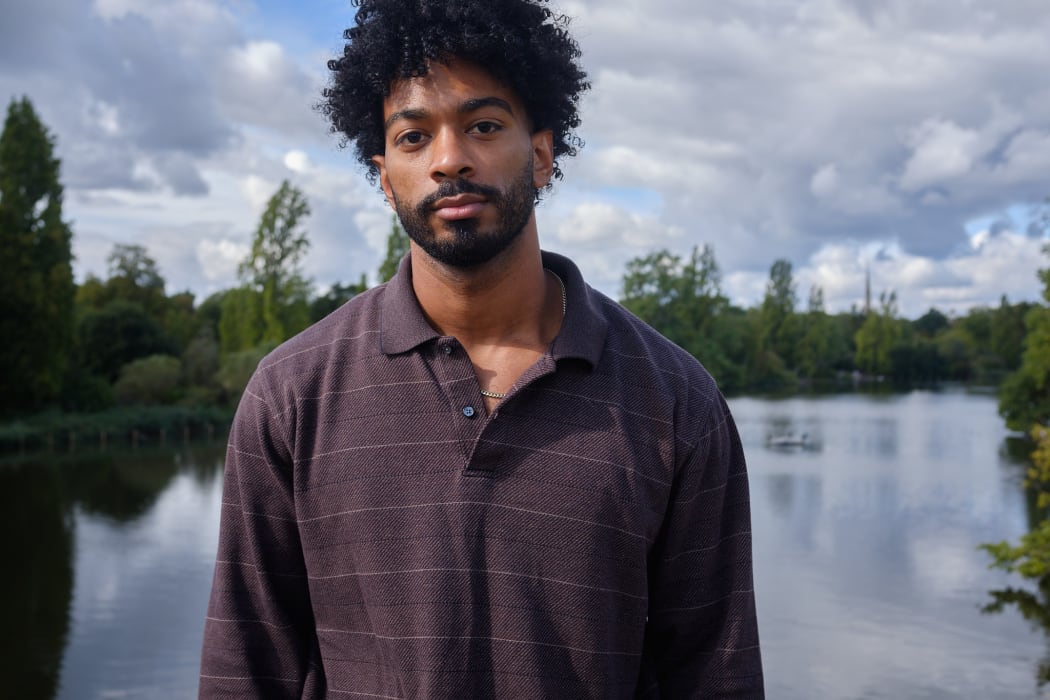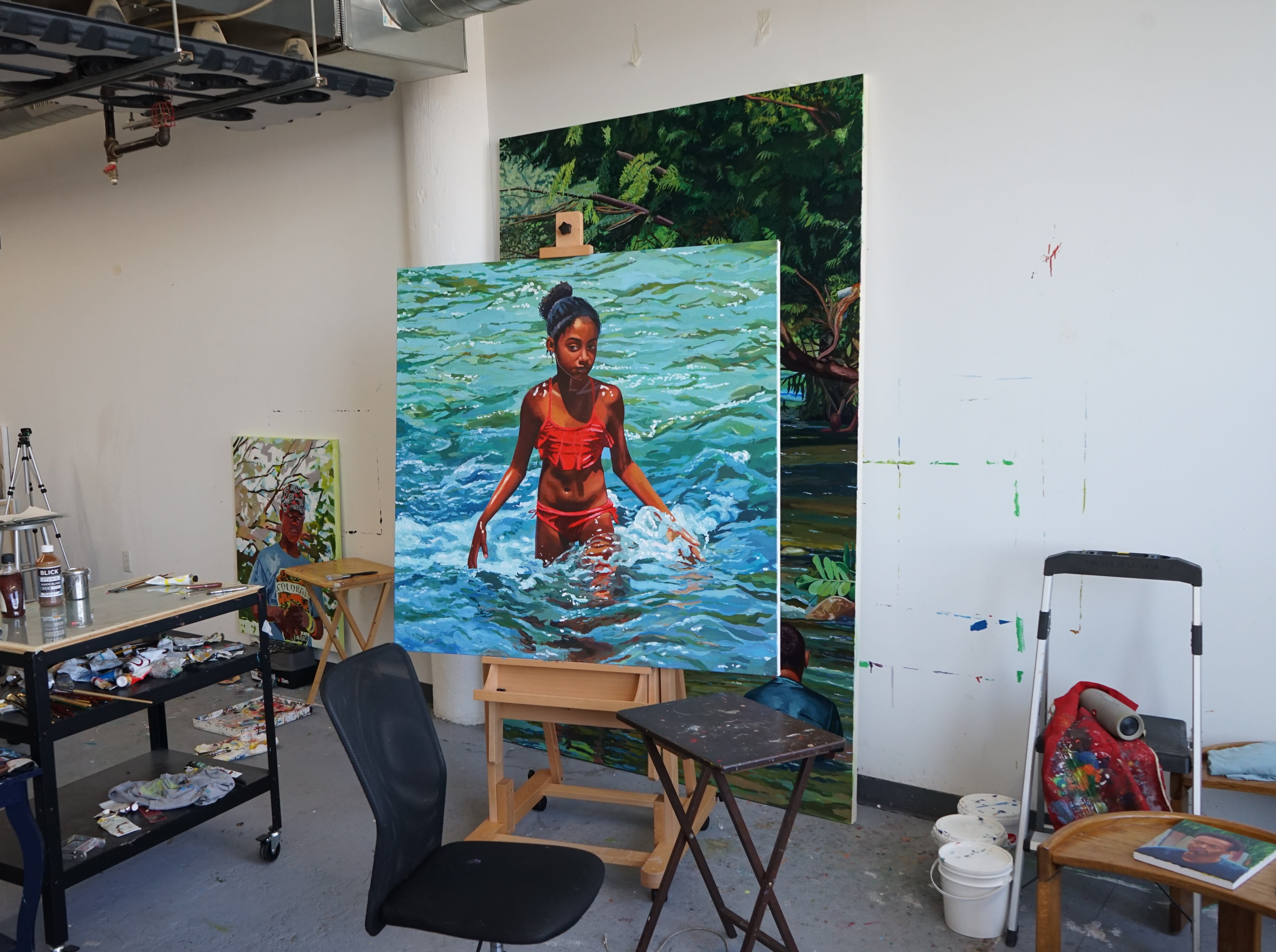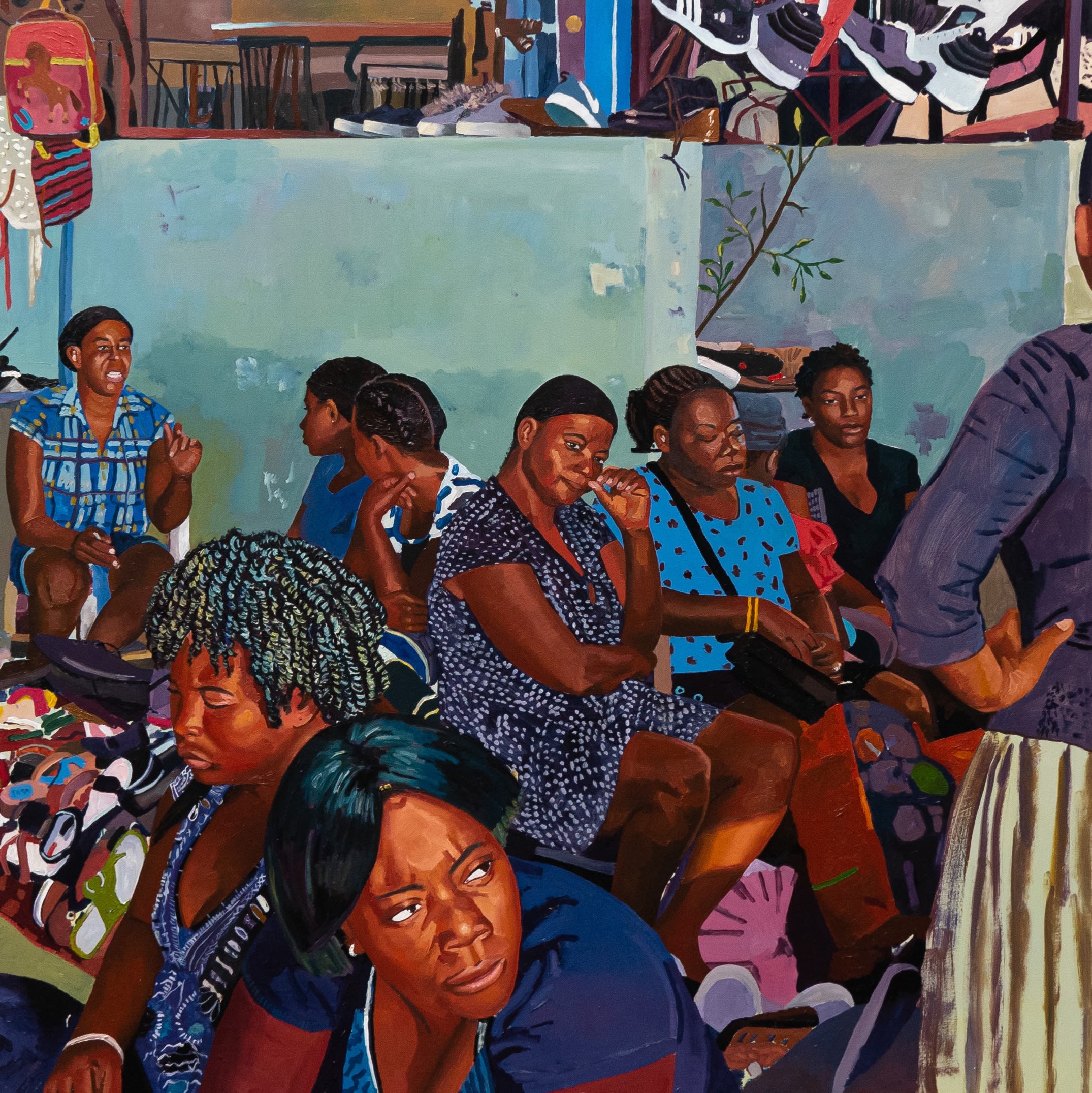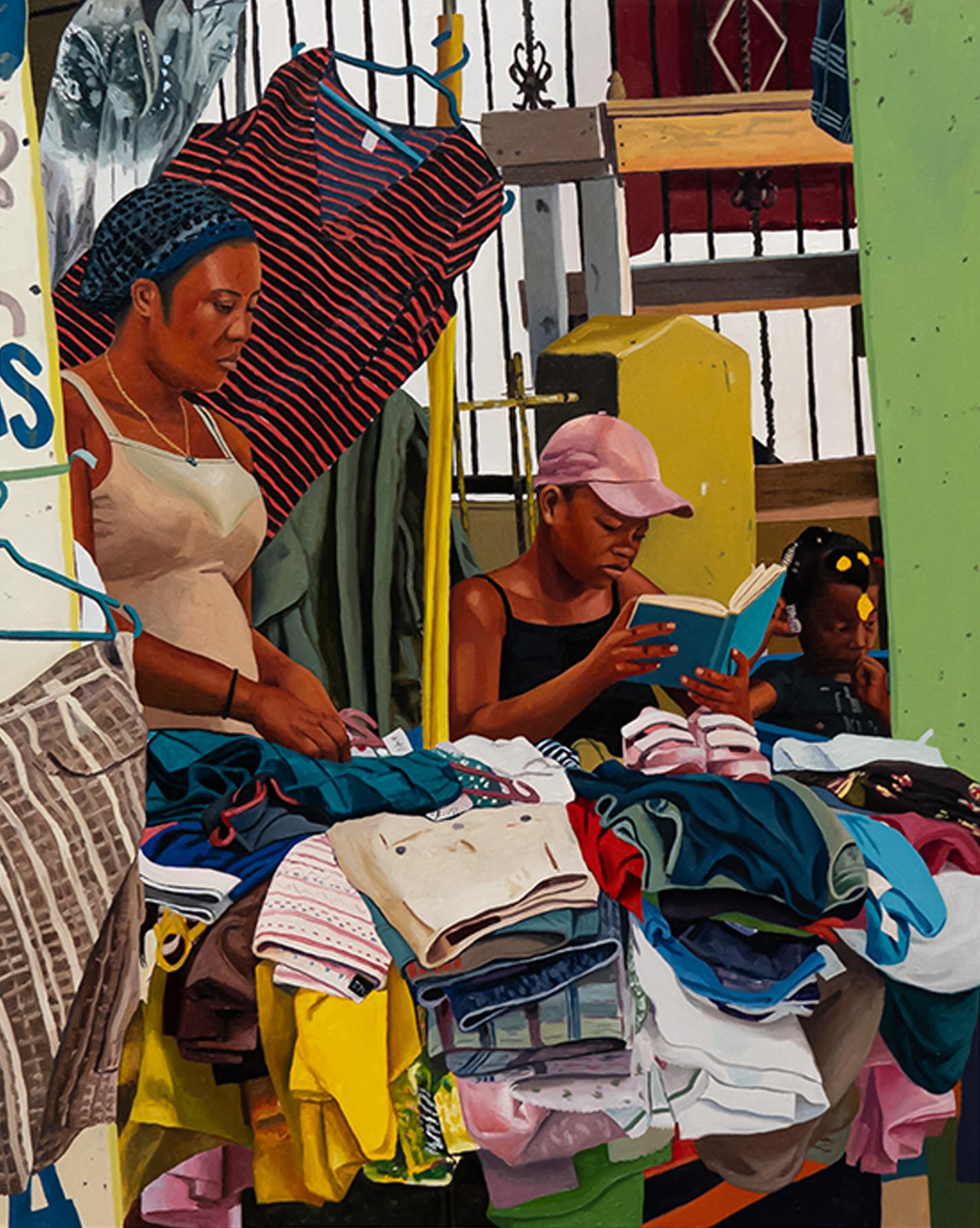
You turned to drawing as a child while you were adjusting in the USA, moving there from the Dominican Republic. What did art mean to you at that time?
As a young child, my introduction to art was when my family and I immigrated from the Dominican Republic to the USA. Art served as a refuge during a time of adjustment and uncertainty. It became a sanctuary where I could assert control over something in an otherwise foreign environment. When my family and I went back to visit the Dominican Republic, there was still that lack of context because I was no longer a local there; I became a visitor. One of the great things about being an immigrant is that I’ve always known that the USA was not the only world because I had come from a different world. My artistic journey began unconsciously through this process of dealing with the disorientation of immigration, which fundamentally shaped my creative path.
In one of your interviews, you’ve said: “There’s no reason to be creative unless you have a problem to solve. Immigrating gave me a problem to solve.” What exactly is the problem that you are trying to solve with your art today?
Immigration has always presented a profound problem for me to explore through my art. My work continues to revolve around the themes of immigration, family in the Dominican Republic, its history, and more recently, I've delved into the context of my hometown and the significance of the rivers there. I'm also fascinated by issues like masculinity, family dynamics, colorism, and the experiences of Dominican immigrants in the United States. These themes remain central to my explorations.
Your works represent people of color with multiple identities – black, mulatto, Afro-Latinx, and Latinx, all pressing against traditional concepts of what it means to be American. And what does be American mean to you?
The concept of "being American" is a multifaceted one, particularly in a country as vast and diverse as the United States. I was fortunate to grow up in Central New Jersey, an area rich in cultural diversity and also one that gets overlooked. It's important to recognize that America is not a monolithic entity; it consists of multiple regions and communities, each with its own unique character. For example, the Latinx community on the west coast looks different from the Latinx experience on the east coast, which is a bit more Caribbean. For my family, the USA was a dream we had waited for years to realize, but the reality of the immigrant experience, with all its challenges and sacrifices, was never fully conveyed back to our homeland. I have a complex relationship with both the USA and the Dominican Republic, places I love but also am very critical of.

© Raelis Vasquez' Studio. Image: Raelis Vasquez, 2023.
Back to your art. You often depict people. Where do you find protagonists for your works? Do you depict only people who you know, recalling your family memories, or that can also be strangers?
Lately, my subjects come from traveling to the Dominican Republic and my family here in the USA. My process consists of merging different references and ideas together while figuring out the composition of the work. When I visit the Dominican Republic, I document my surroundings through photographs and sketches, capturing people and the environment. These visual materials serve as source material in my studio, where I spend months sketching, drawing, and planning before getting in front of the canvas and starting the painting process.
At college you were influenced by the works of the old masters like Velasquez, Rembrandt, and Caravaggio. And are there any contemporary artists that you admire or that have influenced your practice? If not art, where do you find your inspiration sources?
When I first arrived in Chicago during my MFA, Kerry James Marshall’s retrospective was up at the Museum of Contemporary Art. That exhibition had a huge impact on me. The works of Njideka Akunyili Crosby, Meleko Mokgosi, Lynette Yiadom-Boakye are also very impactful for my practice. During my education, I’ve mostly studied old masters. My biggest source of inspiration, however, is being in the Dominican Republic and being around my family.

© Raelis Vasquez, Heat of the Moment, 2023, Oil and acrylic on canvas, 152.4 x 152.4 cm. Image: Giannina Mihalic
At Human Tapestry group exhibition you are presenting two works which depict everyday life in DR. Could you give us some background? In what context have you created these works? What is the story behind them?
"Heat of the Moment" is based on images I captured in Dajabón, a city on the border of the Dominican Republic and Haiti, known for its bustling market. The composition, facial expressions, and the perspective in this painting are reflections of my experience at the market. I don't know what the conditions are now, but in 2019 when I visited, the Haitian border would be opened for vendors to sell goods and products in this market. Vendors, both Dominican and Haitian, sold foods, products, clothing, etc. It was a really striking experience for me as I learned the history of the market and its location on the border adjacent to the Massacre River.
"Family Owned" is a depiction in my hometown, Mao, and highlights the entrepreneurial spirit that characterizes the Dominican Republic. It's important for me to showcase not only the Dominican experience but also the lives of Haitian immigrants who contribute significantly to the country. Sometimes it seems like everyone has a shop or a small business, whether it's a colmado on nearly every street, or someone's mechanic shop or manual carwash.
I have asked myself, this central female figure from “Family Owned” seems to be so deep into her thoughts, a kind of melancholic. I wonder was it really the expression that you noticed or was it rather your creation and imagination, afterwards while you were composing the Picture?
When I am painting, I'm not replicating reality; I aim to paint how the moment feels. I paint things as they feel to me through my brushwork and color. The central woman’s expression in "Family Owned" is an interpretation of the moment's emotional depth. Each figure in the painting carries a distinct emotion, contributing to the overall narrative and composition.

© Raelis Vasquez, Family Owned,, 2023, Oil and acrylic on canvas, 152.4 x 121.9 cm. Image: Giannina Mihalic
I’ve noticed that in your works recently presented in London (editor’s note – at PM/AM) you have placed particular focus on water. However, in the works that you show in Berlin (editor’s note – at BODE), you move back to genre scenes. How important is nature for your practice?
The landscape in the Dominican Republic is overwhelming. It’s something that I wanted to focus on in this series. It was based on my hometown, Mao Valverde, and its rivers. The strong presence of the landscape in my work is something I wanted to focus on, where the figure can become secondary. In Mao, the rivers are an important part of life. The greenery, the fruits, the vegetables are important parts of the Dominican experience. When I was growing up, more than half of what we ate we got from our backyard. It was that kind of life.
Do you interact with the local art scene and art community in the Dominican Republic? Do you feel a part of it or you rather perceive yourself as a US-artist?
There are so many incredible artists doing great work there in Dominican Republic. There are so many incredible artists doing great work there in the Dominican Republic. There are many talented artists in the country, although the infrastructure for visual art may not be as developed in terms of opportunities. When I visit the DR, I’m usually in Mao with my family. I feel a sense of belonging to both the Dominican Republic and the USA in my identity as an artist. Both places made me and continue to influence my perspective and my work.
Could you please tell us a bit about your plans for the future? How do you see your practice developing? You’ve mentioned once that you would love to bring ceramics into your practice. Is it still your intention or your plans have changed?
Looking ahead, I have a hectic schedule with upcoming exhibitions and fairs. I'm very excited for my 2024 calendar. I am also eager to explore new mediums, such as ceramics in my future work. I have worked with ceramics for years and I soon hope to bring it into my practice.